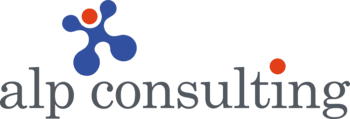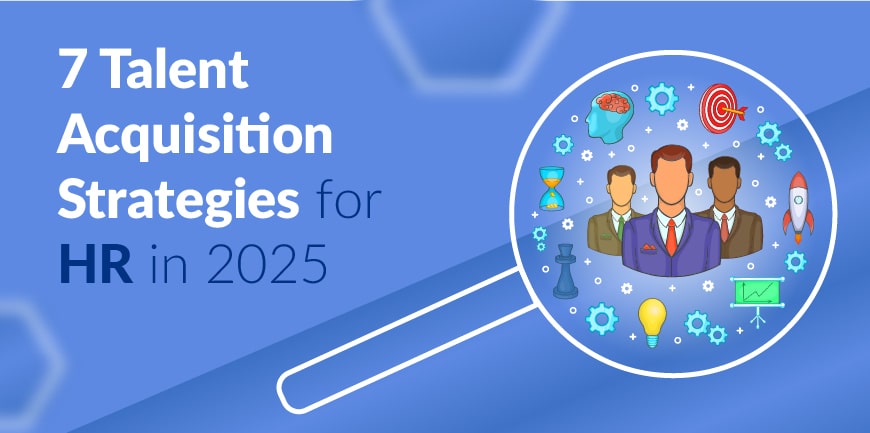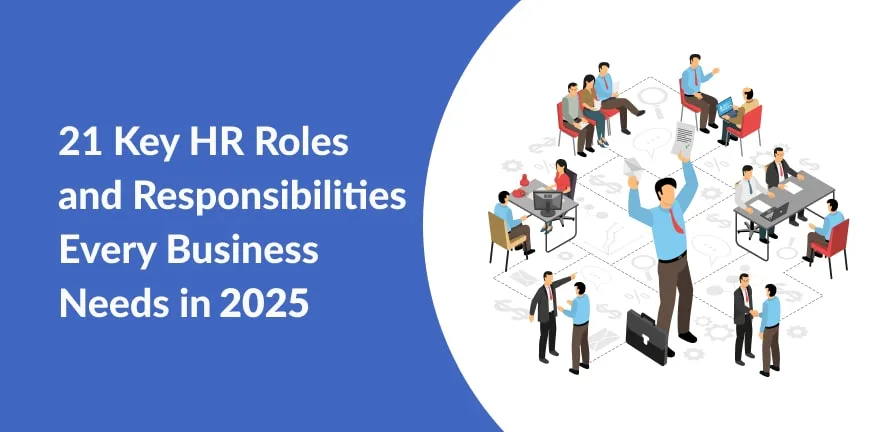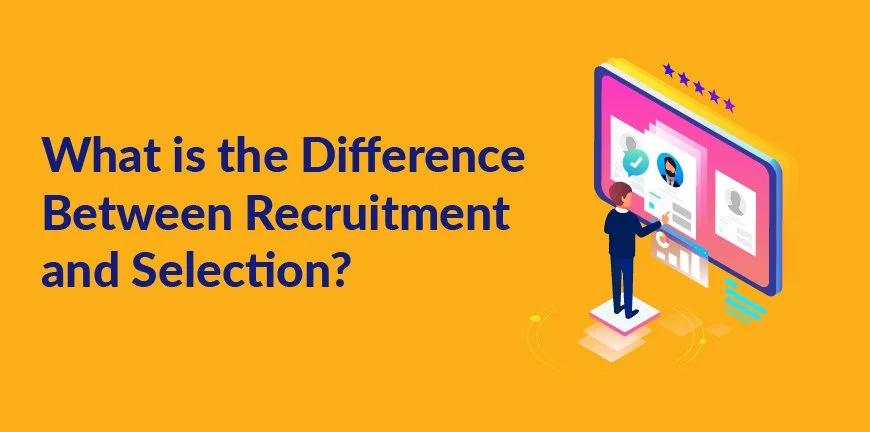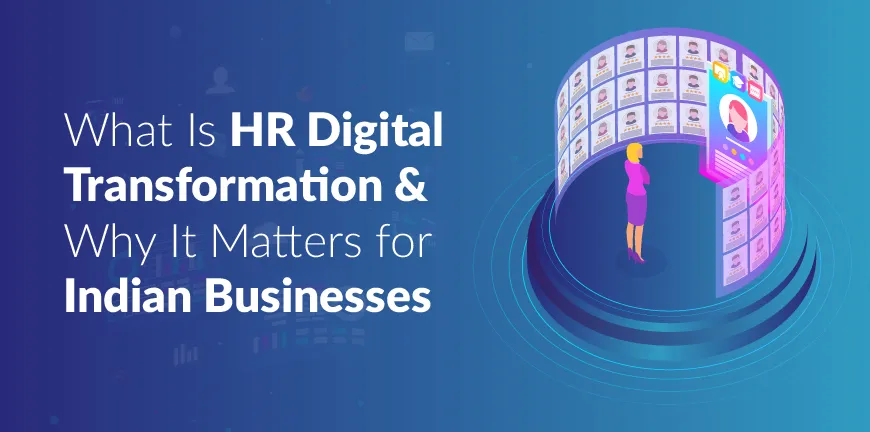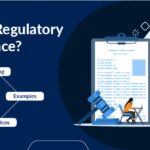
What is Regulatory Compliance?
28/04/2025
What is Flexible Talent? Benefits, Types, Challenges, Trends
30/04/2025In a competitive job market, waiting for a job post to yield results is not the way you can attract top talent. It is a strategic game, and the right people can make or break an organization’s growth. Talent acquisition today has transformed into one of the most vital functions in modern organizations. It is about building winning teams with smart, effective talent acquisition strategies.
What is a talent acquisition strategy?
Talent acquisition strategies are typically comprehensive planning by an organization to attract hire and retain qualified and best in class talent to achieve the goals of the organization. The process entails initiative-taking planning like workforce requirement analysis, employer branding and shaping the candidate’s experience to secure the right people.
How to Develop a Talent Acquisition Strategy?
An organization stands out in the market driven by a compelling employer brand, attracting skilled professionals. To develop the best talent acquisition strategies, here are a few effective steps:
1. Understand Business Goals
Developing innovative talent acquisition strategies require a comprehensive understanding of your company’s bigger picture. Analyze your short-term and long-term goals. It is essential to align your hiring strategy with business requirements and ensure that you are recruiting proactively, creating a workforce that supports future growth.
2. Define Ideal Candidate
As an organization aiming to recruit top talent, before sourcing you need to be clear about whom are you searching for. You need to move beyond job titles and create detailed candidate profiles. Contemplate about the skills and qualifications, cultural values, soft skills and leadership potential. Utilize insights from top-performing employees to create these profiles.
3. Strong Employer Brand
You need to understand that top talents have many options so to stand out of the crowd and attract skilled candidates, you need to establish a robust employer brand. Your employer brand will entail everything from careers pages to how employees discuss your company online. Display the uniqueness of your organization, your mission, values, work culture and growth opportunities.
4. Diversify Sourcing Channels
The traditional method of relying solely on job boards is gone. It is time to resort to a multi-channel source strategy to enhance your reach and attract a broader range of candidates. You must consider using social media recruiting through platforms like LinkedIn, Twitter, etc. Try employee referral programs and going for university partnerships and campus recruitment.
5. Leverage Technology, Data
With technology taking over rapidly, it will be wise of you to utilize tools like Applicant Tracking Systems (ATS), AI screening, and analytics to streamline workflows. Data driven decisions are always essential and with the help of data you can track key metrics like time to hire, cost per hire, source of hire, quality of hire, etc.
6. Prioritize Candidate Experience
Companies should focus on prioritizing candidate experience from start to end as it helps in shaping shapes the candidate’s perception of your company. Candidates will give positive feedback if they are treated with respect. There must be transparent communication in terms of feedback and timelines. A candidate will be able to contribute fully to the growth of the company if they feel valued and included.
What are the 7 Talent Acquisition Strategies for HR?
Organizations and HR professionals must now resort to developing proactive, data-driven talent acquisition strategies to identify, engage and retain high-performing talent. Here are 7 tried-and-tested talent acquisition strategies:
1. Robust Employer Brand
The brand of your company endorses your reputation as a workplace. Top tier candidates are drawn towards a compelling employer brand as they will want to align with your values and mission. You must consider featuring employee stories and testimonials on your careers page and social media platforms.
Try to promote awards, achievements and company culture highlights. You must focus on managing and monitoring reviews on platforms like Glassdoor and Indeed. Most of the candidates will first analyze an employer’s brand before applying for a job so a strong employer brand matter.
2. Smart Workforce Planning
Workforce planning is a remarkably effective strategy, and it is the process of analyzing your current workforce, predicting future talent needs and identifying skill gaps. It ensures that your recruitment initiatives align with long-term business goals. To facilitate a seamless workforce planning you must conduct skills gap analyses regularly, collaborating with department heads to anticipate future talent needs. Proactive recruitment diminishes talent shortages and costly last-minute recruitment drives.
3. Enhance Candidate Experience
The candidate’s experience during the recruitment procedure is an incredibly significant factor that can influence their decision to accept your offer and impact on your brand reputation.
Making a candidate feel encouraged and respected must be your priority and you can do that by streamlining your application process and making it simple, communicating with candidates clearly and regularly. You can personalize interview feedback and provide prompt updates.
4. Utilize Social Recruiting
In today’s modern digital landscape, social media has become a critical platform for communication and for talent acquisition. Social recruiting refers to social hiring or social media recruitment involving usage of platforms like LinkedIn, Facebook, Instagram, Twitter, TikTok and YouTube to draw, engage and recruit candidates.
The talent acquisition sourcing strategy is not just about sharing job openings but is also about making lifelong connections, highlighting your employer brand and creating a quality talent pipeline.
5. Encourage Employee Referrals
Your employees are your most powerful recruiting tool apart from being part of your workforce. They know and fully understand your culture comprehending the mission vision and goals of your company. They will often have extensive networks of qualified professionals in similar fields.
A sturdy employee referral program (ERP) delves into the potential by motivating your team to recommend people they trust. You can offer rewards and recognition in return.
6. Prioritize Diversity, Equity & Inclusion (DEI)
Integrating DEI solutions into your recruitment process is more of a strategic advantage. Diverse teams from across sectors and locations can bring wider perspectives, enhanced creativity, and stronger problem-solving skills.
But along with diversity, equity and inclusion are important, ensuring there is room for everyone, regardless of background, and can strive to succeed and thrive.
7. Utilize Recruitment Technology
Modern hiring is doing well with the introduction of technology as it is transforming the entire process. AI-powered tools to applicant tracking systems (ATS), the appropriate technology can streamline your entire recruitment process. You can Implement an ATS to manage job postings, resumes and candidate communication. Chatbots can also help with the initial screening and FAQs.
Talent acquisition strategies 2025 is not just about filling seats anymore it is about identifying the thinkers, doers, and innovators who strive to shape the future of a company. It is about discovering the right people who along with matching your job description also aligns with your values and objectives.
These individuals bring fresh perspective and energy to your work environment and grow with your evolving business. Embracing the advanced talent acquisition strategies drive HR teams and professionals to curate communities, hone potential, and build a workforce that not only adapts to change but drives it.
Frequently Asked Questions (FAQs)
1. What are the steps in talent acquisition strategy?
A talent acquisition strategy involves several key steps like organizational needs analysis, approval of job requisitions, vacancy intake, determining selection criteria, sourcing and attracting candidates, administering selection methods and many more.
2. What is a TA strategy?
TA strategy, also known as a talent acquisition strategy, involves a well thought out plan an organization uses to draw, recruit and retain top talent to attain its business goals.
3. How to build a talent acquisition strategy?
Building a strong talent acquisition strategy entails underlining clear goals, comprehending your needs, and implementing effective procedures to attract, evaluate, and hire talent.
4. What is KPI in talent acquisition?
Key Performance Indicators (KPIs) for talent acquisition are measurable metrics that help in evaluating the effectiveness and efficiency of the recruitment process. This helps organizations to improve and track various aspects.
5. What is SOP for talent acquisition?
A Talent Acquisition Standard Operating Procedure (SOP) refers to a documented guide that defines the detailed process for attracting, evaluating and hiring talent within an organization.
Contact Us For Business Enquiry

Rajkumar Shanmugam
Rajkumar Shanmugam is the Head of HR at ALP Consulting, bringing over 19 years of comprehensive HR leadership experience across India and international markets. His expertise spans talent acquisition, employee relations, performance management, compliance, and HR transformation. Rajkumar has a proven track record of driving people-centric initiatives, enhancing workplace culture, and aligning HR strategy with business goals. With extensive experience in US staffing operations and global mobility, he continues to lead organizational excellence through innovation and employee engagement.
